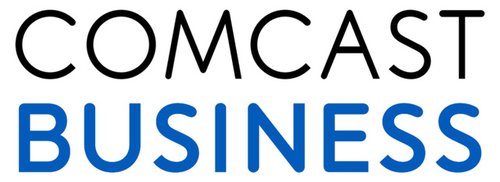Hanover Bald Eagle Blog # 12 - 2022
In partnership with Pennsylvania Game Commission and Comcast Business .

Hanover's two beautiful hatchlings are 8 days old today. The first couple weeks are a delicate time for the Hanover family, but with such experienced parents, the two youngsters have a promising life ahead. Together, the Hanover pair has successfully fledged ten eaglets.
Bald eagle eggs hatch asynchronously, meaning at different times. This season, the Hanover eggs hatched almost exactly 24 hours apart, which is a relatively short interval. Generally speaking, bald eagle eggs hatch between 1 and 4 days apart. Asynchronous hatching is the norm for raptors.
Bald eagles are born semi-altricial, which, in normal-speak, means relatively helpless. The hatchlings struggle to remain upright, they are covered in fluffy down rather than fully formed feathers, and they depend on their parents for warmth. Altricial comes from the Latin root meaning “to nourish,” and as we have seen, these two beauties certainly need nourishment.
On the other end of the spectrum are precocial young, a word that shares a Latin root with the word “precocious.” Mallard ducklings are a great example: they leave the nest the morning after they hatch and can thermoregulate within 24 hours. Bald eagles, on the other hand, leave the nest 8-14 weeks after hatching, and do not start self-thermoregulating until they are 15 days old.
These two birth strategies raise interesting questions. Why do some birds require constant care from their parents, while others can move out immediately?
Both altricial and precocial young require significant investment from the parents. The main difference is when parents invest that energy. A female mallard produces a clutch of energetically rich and nutritious eggs so that the embryos develop into precocious, independent ducklings while still inside their shells. She commits many resources to the healthy development of the ducklings on the front end of the breeding season, prior to hatching, in exchange for a relatively short parenting stint (2 weeks) after hatching.
The female Hanover eagle still produces nutritious eggs, but she commits more energy, time, and resources to the nestling phase than parents of precocial offspring do. Examples of this care include providing food for the nestlings, protecting them from inclement weather, standing watch over the nest as they grow, and even teaching them for a period of time after they fledge.
Raising altricial young is called the “individual care” strategy, while preocicial has been deemed the “mass production” strategy. Clutch size and feeding habits are two factors that play into these different strategies. Bald eagles lay 1-2 eggs each year and mallards lay up to 13. Newly hatched ducklings fall prey to predation fairly often, so by laying a large clutch, a mother mallard raises the chance that some of her offspring will survive. Bald eagles, and most raptors, invest in just a few young over a long period of time, so that by the time they fledge, they are big and strong enough to hold their own.
Diet also matters. Raising precocial young is common for species that eat plants, because plants are more consistently available than rodents, insects, and birds, which are prey species that fluctuate in their availability. Species that hunt live prey, like bald eagles, must learn the skills required to be successful, and these skills take time to master. Therefore the “individual care” strategy makes a lot of sense for eagles.
Neither strategy — altricial versus precocial — is good or bad. They both work, or they wouldn’t exist!
In the coming weeks, we will see rapid growth, increased locomotion (less bobble-headiness), and heightened vocalizations in the two Hanover nestlings. Phase 1 is upon us!

RETURN TO HANOVER BALD EAGLE BLOGS
WATCH THE HANOVER BALD EAGLE LIVE CAMS
For over 20 years, HDOnTap has provided live streaming solutions to resorts, amusement parks, wildlife refuges and more. In addition to maintaining a network of over 400 live webcams, HDOnTap specializes in design and installation of remote, off-grid and otherwise challenging live streaming solutions. Contact press@hdontap.com for all media needs, including images and recordings.

